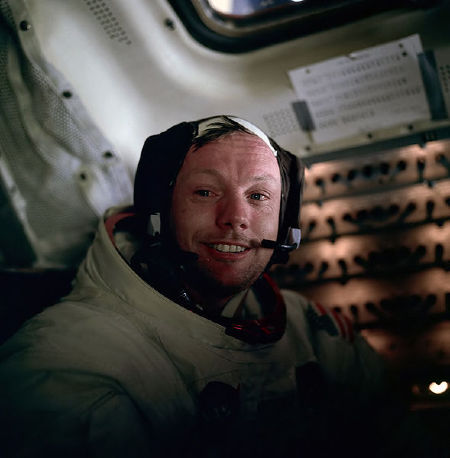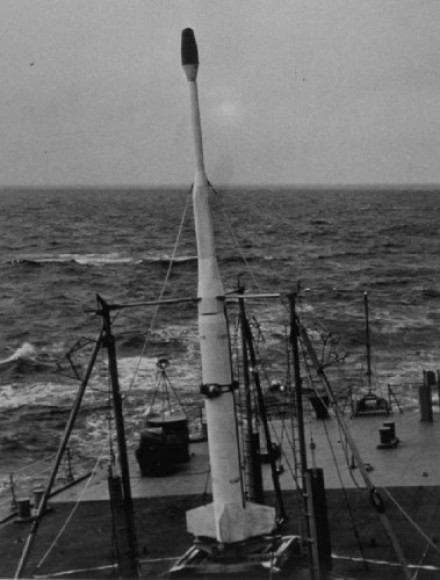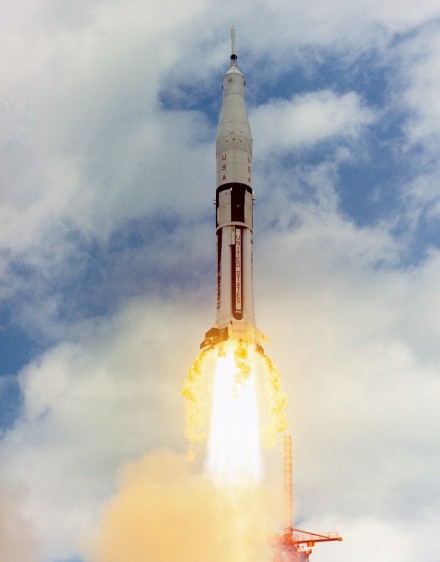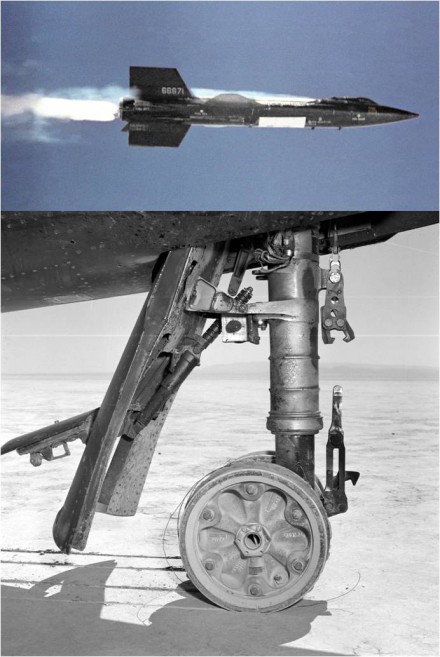
Neil Alden Armstrong, the first man from Earth to set foot upon the Moon, departed from this life on Saturday, 25 August 2012. A native of Wapakoneta, Ohio, Armstrong spent 82 years in mortality.
Flight, both in the air and in space, was a major focus of Neil Armstrong’s life. He served in the Korean War as a Naval Aviator. Later, Armstrong saw duty as an experimental research test pilot for the National Advisory Committee For Aeronautics (NACA) and the National Aeronautics and Astronautics Administration (NASA). His exploits as an astronaut, first with the Gemini Program and then with Project Apollo, are well known.
A licensed pilot by age 15, Neil Armstrong flew many different types of aircraft. A short list includes the F9F Panther, all of the Century Series aircraft (with the possible exception of the F-102 Delta Dagger), the B-47 Stratojet and the KC-135 Stratotanker. Armstrong also piloted the Bell X-1, the Bell X-5 and North American X-15 flight research aircraft.
Armstrong was quite accustomed to danger and experienced a number of life-endangering situations while in flight These include a wartime ejection from a stricken aircraft, overshooting Edwards AFB by 45 miles while flying the X-15, the Gemini VIII emergency in space and a harrowing last second ejection from a faulty Lunar Landing Research Vehicle (LLRV). Each time danger threatened, Armstrong was equal to the challenge and lived to fly another day.
In addition to being a pilot and astronaut, Neil Armstrong was an engineer. His educational attainments included degrees in aeronautical engineering from Purdue University (bachelor of science, 1955) and the University of Southern California (masters of science, 1970). After leaving NASA in 1971, Armstrong served for 8 years as a professor of aerospace engineering at the University of Cincinnati.
Armstrong was the recipient of many awards and accolades during his life. Primary among such were the Presidential Medal of Freedom, Congressional Space Medal of Honor and the Congressional Gold Medal. He also received the Langley Gold Medal, the Robert H. Goddard Memorial Trophy, the Sylvanus Thayer Award, and the Collier Trophy. Neil Armstrong was also an inductee of the Aerospace Walk of Honor and the United States Astronaut Hall of Fame.
Neil Armstrong was the subject of much notoreity as a result of the pivotal role he played in the Apollo 11 lunar landing of July 1969. As the first man from Earth to walk upon the Moon, his name will be forever linked with that epic event. However, Armstrong was neither a man of the limelight nor desirous of being a public figure in any way. Intensely private, he participated in relatively few social settings which would subject him to public scrutiny or interaction. This peculiar personal trait, which he manifested to the end of his life, mystified many and rankled some.
For many of us who were around forty-three (43) summers ago when Neil Armstrong stepped off the Lunar Module Eagle onto the lunar surface at the Sea of Tranquility, his passing is a particularly poignant moment in the history of our lives. Why is that? That we miss him is beyond question. But, that is not really the core of the matter. We will see him again. Just as we will see all those who have passed beyond the veil when it is our turn to depart from mortality.
Rather, the poignancy that we feel stems from where we now find ourselves as a spacefaring nation. Individuals like Neal Armstrong have bequeathed to us a priceless heritage in the realm of spaceflight. That heritage now languishes in a backwater of national complacency, purposeless and lack of vision.
We cannot go the Moon as Neil Armstrong and others once did. The Space Shuttle is gone. We do not even have a spacecraft or a launch vehicle to get to our own space station now orbiting the Earth. We must pay another country $63,000,000 per seat just to get there and back. While we mourn Neil Armstrong’s passing, we mourn even more for that which once was and now is not. Our mourning is made more profound by the realization that we have only ourselves to blame.
The family of Neil Armstrong has requested that we remember him and give him a wink every time we look up at the Moon. Perhaps we should also take a moment and reflect upon what he and other space explorers accomplished as well as the path that they set before us. As we do so, maybe we should hang our heads a bit for the callous treatment of what they left us for safe keeping.

Fifty-four years ago this month, the first of a trio of secret nuclear test shots was conducted from a remote location in the South Atlantic Ocean. These tests were conducted in support of a secret Defense Nuclear Agency program given the code name Operation Argus.
In early 1958, Nicholas Christofilos, a researcher at Lawrence Radiation Laboratory (LRL) theorized that artificial radiation belts could be produced through detonation of a nuclear device in space. These belts would be the result of charged particles becoming trapped within the magnetic field that surrounds the Earth.
Christofilos posited that the artificial radiation belts would interfere with radar tracking and communications as well as the electronics of ballistic missiles and satellites. As such, the Christofilos Effect could be used for tactical effect against an adversary.
At the time Christofilos conceived of his theory, the Cold War between the United States and the Soviet Union raged at a fever pitch. Each country sought to gain any tactical advantage it could over the other. As a result, most strategies for doing so, even the extreme ones, were seriously considered. Often this was so if for no other reason that each country feared that the opposition would exploit a concept that it itself had outright rejected.
The purpose of Operation Argus was to test the validity of the Christofilos Effect. A triple stage USAF/Lockheed X-17 rocket was modified to carry a W-25 nuclear warhead with a yield of 1.7 kilotons. Three (3) launches would take place with respective detonation altitudes of 87, 158 and 405 nautical miles. Approximately 4,500 individuals participated in Operation Argus with the entire effort classifed as secret.
The point of launch for Operation Argus test shots was located roughly 600 nm southwest of Cape Town, South Africa. This location was chosen for two reasons. First, that portion of the Earth’s magnetic field capable of efficiently holding the charged particles was located between latitudes of 35 and 55 degrees. Second, the limited altitude capability of the booster vehicle required a launch location in the southern hemisphere where the magnetic field dips down much closer to the surface than in the northern hemisphere.
A total of nine (9) United States Navy ships participated in Operation Argus. Each ship left port separately with no knowledge of the others. Collectively known as Task Force 88 (TF-88), these ships came together for the first time at the Operation Argus South Atlantic test location in August of 1958. The missile launching ship for Operation Argus was the famous USS Norton Sound.
Argus I was launched at 02:28:27 UTC on Wedneday, 27 August 1958. The W-25 warhead detonated at 87 nm above the surface of the South Atlantic. This test was quickly followed by Argus II (Saturday, 30 August) and Argus III (Saturday, 06 September) which detonated nuclear devices at altitudes of 158 and 405 nm, respectively.
The results of Operation Argus verified that the Christofilos Effect was indeed a valid concept. The artificial radiation belts produced by the three nuclear detonations lasted for a period of several weeks in space before dispersing. The success of the experimental effort was first made public by the New York Times in March of 1959. However, the full details of the test series remained classified until April of 1982.

Forty-six years ago this month, the United States successfully conducted a crucial suborbital flight test of the Apollo Command-Service Module (CSM). Known as AS-202, the unmanned space mission was the third involving the Apollo Block I spacecraft and the Saturn IB booster.
The primary goal of Apollo-Saturn Mission 202 (AS-202) was to man-rate the Apollo CSM for spaceflight. Accomplishment of such represented a key step along the way in America’s quest to land men on the Moon before the end of the 1960’s.
The Apollo Guidance and Navigation system flew for the first time on AS-202, as did the fuel cell system the spacecraft would use for electrical power in space. Other critcal systems tested during the mission included the Service Propulsion System (SPS) and Thermal Protection System (TPS).
Weighing 44,294 lbs, the AS-202 CSM was launched into a suborbital flight path by a Saturn IB launch vehicle. Lift-off from Cape Canaveral’s LC-34 occurred at 17:15:32 UTC on Thursday, 25 August 1966. The entire launch stack tipped the scales at a little over 1.344 million pounds at launch.
Riding on 1.6 million lbs of first stage thrust, the CSM reached an altitude of 30.2 nm in 150 seconds. During first stage flight, the Saturn IB’s eight (8) Rocketdyne H-1 engines burned 880,500 lbs of propellants (RP-1 and LOX).
Following first stage separation, the Saturn IVB upper stage then drove the CSM to an altitude of 117 nm in a 450-second burn of its single Rocketdyne J-2 engine. In doing so, this powerplant consumed 228,500 lbs of propellants (LH2 and LOX) at a thrust level of 200,000 lbs.
Shortly after second stage separation, the Apollo CSM SPS was fired for 215 seconds in the first of four (4) separate burns. This resulted in the CSM achieving an apogee of 617 nm. The total energy added by the SPS resulted in the Apollo Command Module (CM) hitting atmospheric interface (400 KFT) in excess of 29,000 feet per second.
The CM reentry trajectory featured a pull-up maneuver executed at 216 KFT. This caused the vehicle to ascend to 266 KFT and scrub-off about 4,200 feet per second in velocity. The CM then resumed a normal reentry characterized by continuing loss of altitude and velocity. By parachute deployment at 24 KFT, the vehicle base heat shield had been subjected to a thermal load of 22,900 BTU’s per square foot.
Splashdown of the AS-202 CM occurred in the north Pacific Ocean at 18:48:34 UTC. The vehicle had flown 13,900 nm downrange of Cape Canaveral and spent 93 minutes and 2 seconds in flight. Because the landing point was 200 nm off-target, the recovery ship (USS Hornet) did not arrive on station for another 8.5 hours.
The flight of AS-202 was extremely successful. So much so, that NASA declared the Apollo Block I Command-Service Module ready to fly men into space. At this point, things looked very good for the Apollo Lunar Landing Program. Sadly, the events of Friday, 27 January 1967 would profoundly affect the lives of a trio of astronauts scheduled to make the first manned flight of an Apollo Block I CSM.

Forty eight-years ago this month, the North American X-15 hit a speed of 3,590 mph (Mach 5.23) in a flight to 103,300 feet. While decelerating through Mach 4.2, the nose gear of the aircraft unexpectedly deployed in flight.
The 114th powered flight of the legendary X-15 Program took place on Friday, 14 August 1964. USAF Major Robert A. Rushworth was at the controls of X-15 Ship No. 2 (S/N 56-6671). The mission would be Rushworth’s 22nd flight in the black hypersonic aircraft.
X-15 drop from the NB-52A (S/N 52-0003) launch aircraft took place over Delamar Dry Lake, Nevada. Seconds later, Rushworth called for 100% power from the X-15’s XLR-99 liquid-fueled rocket engine as he pulled into a steep climb. He subsequently pushed-over and then leveled-off at 103,300 feet.
XLR-99 burnout occurred 80.3 seconds after ignition. At this juncture, the X-15 was traveling at 3,590 mph; better than 5 times the speed of sound. Following burnout, the aircraft slowed and began to lose altitude under the influence of aerodynamic drag.
As the Mach meter needle passed through Mach 4.2, Rushworth heard a loud bang from the airframe. The aircraft became hard to control as it gyrated in pitch, yaw and roll. Rushworth was equal to the moment and brought his troubled steed under control. However, the aircraft had an uncommanded sideslip and Rushworth had to use left aileron to hold the wings level.
Gathering his wits, Rushworth realized that the loud bang he heard was very similar to that which occurred when the nose gear was deployed in the landing pattern. Unaccountably, the X-15 nose gear had deployed in supersonic flight. An unsettling confirmation of Rushworth’s hypothesis came when the pilot spotted smoke, quite a bit of it, in the X-15 cockpit.
As Rushworth neared Edwards Air Force Base, chase aircraft caught up with him and confirmed that the nose gear was indeed down and locked. Further, the tires were so scorched from aerodynamic heating that they probably would disintegrate during touchdown on Rogers Dry Lake. They verily did.
Despite his tireless nose gear, Rushworth was able to control the rollout of his aircraft fairly well on the playa silt. He brought the X-15 to a stop and deplaned. Man and machine had survived to fly another day.
Post-flight analysis revealed that expansion of the X-15 fuselage due to aerodynamic heating was greater than expected. The nose gear door bowed or deformed outward more than anticipated as well. Together, these two anomalies caused the gear uplock hook to bend and release the nose gear. Fixes were subsequently made to Ship No. 2 to prevent a recurrence of the nose gear door deployment anomaly.
Rushworth next flew X-15 Ship No. 2 on Tuesday, 29 September 1964. He reached a maximum speed of 3,542 mph (Mach 5.2) at 97,800 feet. The nose gear door remained locked. However, while decelerating through Mach 4.5, Rushworth heard a bang that was less intense than the previous flight. This time, thermal stresses caused the nose gear door air scoop to deploy in flight. While the aircraft handled poorly, Rushworth managed to get it and himself back on the ground in one piece.
Following another redesign effort, Rushworth took to the air in X-15 Ship No. 2 on Thursday, 17 February 1965. He hit 3,539 mph (Mach 5.27) at 95,100 feet. On this occasion, both the nose gear door and nose gear door scoop remained in place. Unfortunately, the right main landing skid deployed at Mach 4.3 and 85,000 feet.
Thermal stresses were once again the culprit. Despite degraded handling qualities with the landing skid deployed, the valiant Rushworth safely landed the X-15. Upon deplaning, he is reported to have kicked the aircraft in a show of disgust and frustration. Unprofessional maybe, but certainly understandable.
Yet another redesign effort followed in the aftermath of the unexpected main landing skid deployment. This was the third consecutive mission for X-15 Ship No. 2 and Rushworth to experience a thermally-induced landing gear or landing skid deployment anomaly. Happily, subsequent flights of the subject aircraft were free of such issues.





